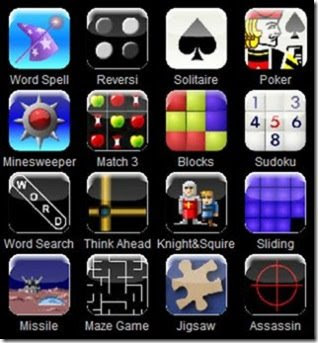 Facebook game developer Playfish only launched its first game, Who Has The Biggest Brain?, just before Christmas 2007. But it has already generated 43m users across its six Flash-based casual games, with 21m playing within the last month.
Facebook game developer Playfish only launched its first game, Who Has The Biggest Brain?, just before Christmas 2007. But it has already generated 43m users across its six Flash-based casual games, with 21m playing within the last month.As one of Facebook’s most popular app makers, Playfish shows how Facebook can be a gaming platform – and one that’s already, in terms of popularity, leaving Sony, Microsoft and Nintendo in its dust. Investors including Atari CEO David Gardner have put a total of $21m (£14.7m) into the company, and with the average player spending 30 minutes with a Playfish game every day, generating between 15 cents and $1 each per month in revenue, its ventures seem astute indeed.
Below is an interesting interview between EDGE and Playfish's CEO Kristian Segerstrale focused on the brave new frontier he’s been exploring.
Is it fair to say that you’re one of the first companies to think about Facebook and other social networks as gaming platforms?
There are a few companies that focus on them as platforms, but we’re the only one with a gaming heritage. I think we’re at the bleeding edge of what’s happening in the games industry – we’re making games as a service as opposed to as a product. You don’t buy something up front, you play games that evolve over time, with a free-to-play model and the chance to buy upgrades. That has a lot of implications – you don’t do a marketing blitz ahead of the game, and we ask players what they like and don’t like, and track their data to see when and why they stop playing. We also utilize fully viral distribution, so 98 per cent of our new players to date come from invites or from seeing on friends’ profiles that they’re playing the game. If you look at the top ten apps you don’t see any established IP there.
Why is that lack of known IP so pronounced?
The source of trust you get from a known IP like FIFA or Halo gets negated on social networks by the fact that trust instead comes from friends’ tastes in games. Also, it’s free to play so you can try games out. We’re also philosophically different from other game companies: we fundamentally try to make games that are for people to play together. We appeal to social emotions, like a game of cards – it’s not you and the cards, it’s about what’s going on between the people playing. Research we did into Who Has The Biggest Brain? said that the average player played well over 50 games of five minutes each, and we couldn’t believe that there would be that much value in that game. And it all comes from the fact that the emotional driver for playing is not you beating your own score but finding out how good your wife or friends are.
Why do you think traditional game-makers aren’t leading this sort of online gaming?
There are actually fewer serious companies doing what we’re doing than we thought there would be, but you need to operate a service and not a product. It’s pretty hard – we had to brainwash ourselves to not think in terms of a release schedule and a marketing plan, and instead think: ‘What are we doing for our players this month?’ That’s a fundamental change. It’s very much about monitoring and deciding whether incremental changes are worth it, and this is uncomfortable for companies that think of games as products. We also require an eclectic range of skills and expertise, and cope with 3.5m players per day, something an internet company is comfortable with, but not necessarily a games company.
Do you think that these companies can apply traditional game design to social networks?
On the design side EA has done a fair amount of work, but, not to cuss EA, particularly as they’ve done some pretty cool stuff, I think they’re having a challenge designing social interaction for social networks. If you have a bunch of designs for other platforms and you’re told to make them successful on social networks, the first idea is to just convert the game to Flash, add a leaderboard and launch it. But if it’s not designed to be played socially or isn’t free to play, it won’t work. It won’t distribute or make money. But if you have a product that you’re used to consumers paying £20 or £30 to play, do you really want to give it away for free on a social network? Yet you have to destroy some value in order to make a new kind of value.
Do you consider it a risk to depend on Facebook and the other social networks?
Sure there’s a dependence, but there’s a dependence both ways. One of the reasons for Facebook’s success is it allowed third parties to make applications. And one of the things we’ve invested in from the start is to try to be as helpful to Facebook as possible because the relationship between an app maker and the network can be symbiotic. We answer for a lot of the time spent on Facebook today, we drive new users into it and we give reasons for people to connect with their friends. Quid pro quo, they provide us with the ability to spread virally and to have access to people’s friend relationships.







